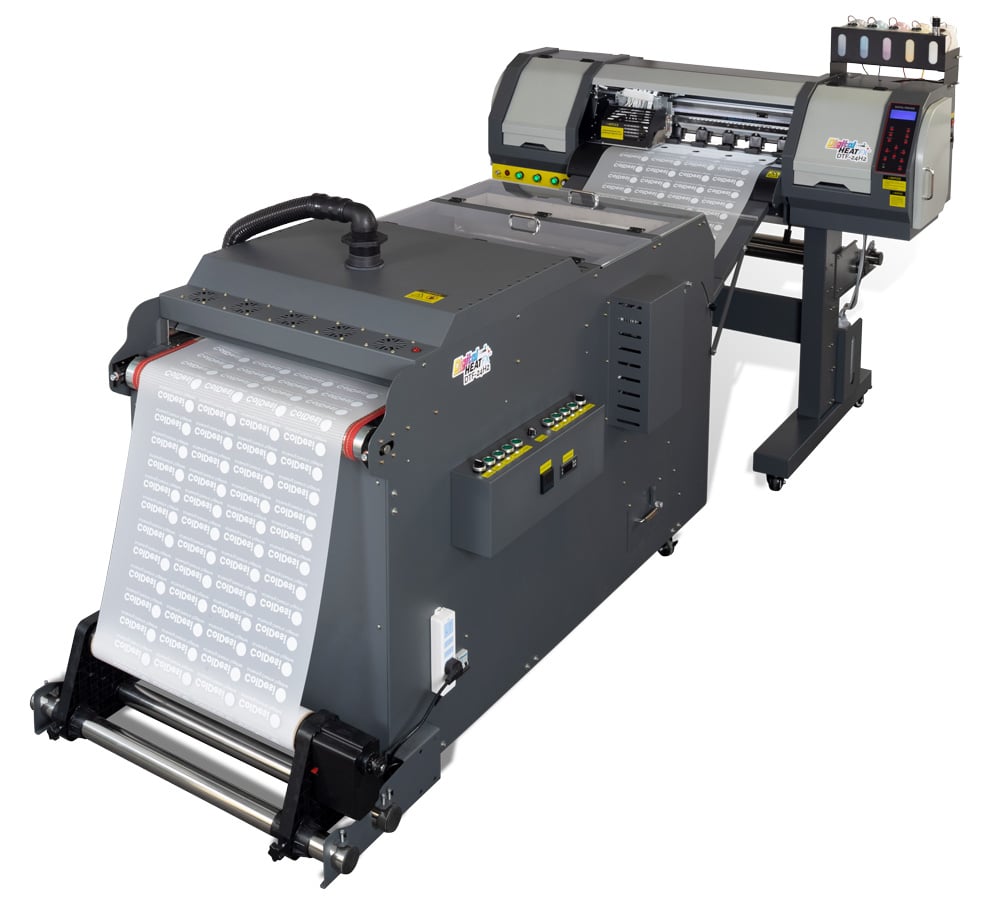If you’re new to running your own business, or new to the embroidery business you may have done some simple math to figure out how profitable this business could be for you.
Example: You can sell a embroidered polo for $35. The polo cost $8 and the supplies cost $1 per logo, so we won’t even calculate it in. Meaning your profit is $26!
While this is a good start, it’s not painting the whole picture. We’ll give you a few other costs to take into consideration, but ultimately every business is unique and so you’ll want to really look at your business when determining profit.
1. Labor
When you run your own business it may be easy to forget about your own labor costs, because it’s not money that’s being sent somewhere else. It’s really important however to accurately calculate your profit.
Using the same numbers as above, let’s say you figured out that your machine can embroider 10 logos onto polos in one hour. If you run your machine for 8 hours, that means you can make over $2,000 every day (10 x 8 x $26). Unfortunately not, because first off you need to pay yourself for those 8 hours, and you probably want to pay yourself a decent wage. So let’s say you pay yourself $25/hour and so each day you’re paying out $200.
The next thing to consider is the labor that went into getting that customer, because chances are you’re not spending 8 hours of day doing embroidery. You’re spending time on emails and phone calls with customers. You’re actively going out and talking to potential customers. You’re learning how to market your business on Facebook. You’re creating business pages on Google and Bing. You’re doing all kinds of administrative work each day, because you need to in order to run a successful business.
You’re also delivering that order to the customer. Are you shipping it to them? Delivering in person? That costs money in the supplies you need – boxes, mailing labels, etc. – and the delivery method, either gas or courier fees.
Let’s say you manage to run your embroidery machine on average 3 hours a day. You do 30 shirts in that time, sell for a total of $1050, the cost of those 30 shirts was $270, your labor for the day cost $200, and let’s say that shipping cost $30. That still leaves $550 profit, but we do want to consider a few other costs as well.
2. Rent & Utilities
If you’re a home based business, these might seem easy to ignore, because they’re not being billed directly to your business. However, adding an embroidery machine to your home that is running for 3-4 hours every day is going to add some cost to your bill every month. While it may be hard to calculate beforehand, it is something that you may want to take into consideration and make an expense in your accounting to records for the “space you’re renting” and the “utilities you use”. (Your accountant will want this information too.)
3. Taxes
Taxes are complicated things. They vary from state to state, and often even by county. The best thing you can do is have an account working with you to help you figure out what you need to consider and how much.
One if the best things you can do for your business and your taxes, is to ensure you are charging the right % of sales taxes to your customers. If you’re charging $35 a shirt and your county and state’s combined sales tax is 9%, your customer should be billed $38.15 per shirt, and you’re setting aside and reporting that $3.15 tax to the government.
You may also owe personal income tax, depending on how your company is set up. So your $25/hour may owe the government a % at the end of the year.
4. Mistakes
You’re focused on the profit of the product you sell, but what about all the times you make a mistake? And there’s a few ways in which mistakes should be calculated and can impact your profit:
- Supplies and blanks. Not ordering enough, or the wrong ones may force your to overnight supplies, which can cost a lot. Make sure you have enough of the supplies you consistently use to last your 60 days. And the best part is backing and thread don’t go bad.
- Embroidery mistakes. It’s very common for the first shirt you embroider in an order to come out wrong. In a 60 shirt order you may mess a few up, and as long as your have a high enough cost to retail price, you will cover some of that. Make sure you are practicing with your machine, before you take any order to help reduce, if not eliminate those mistakes.
Just like with any other business, there are going to be costs that you don’t expect, and things that cost more than you expect. The more you research about the custom embroidery business, and the costs of being self-employed the better prepared you’ll be and the more profitable you’ll be. If you’re not sure about some of the average costs for things, or what to expect when it comes to tax season, make sure you reach out to professionals that can help prepare you.






